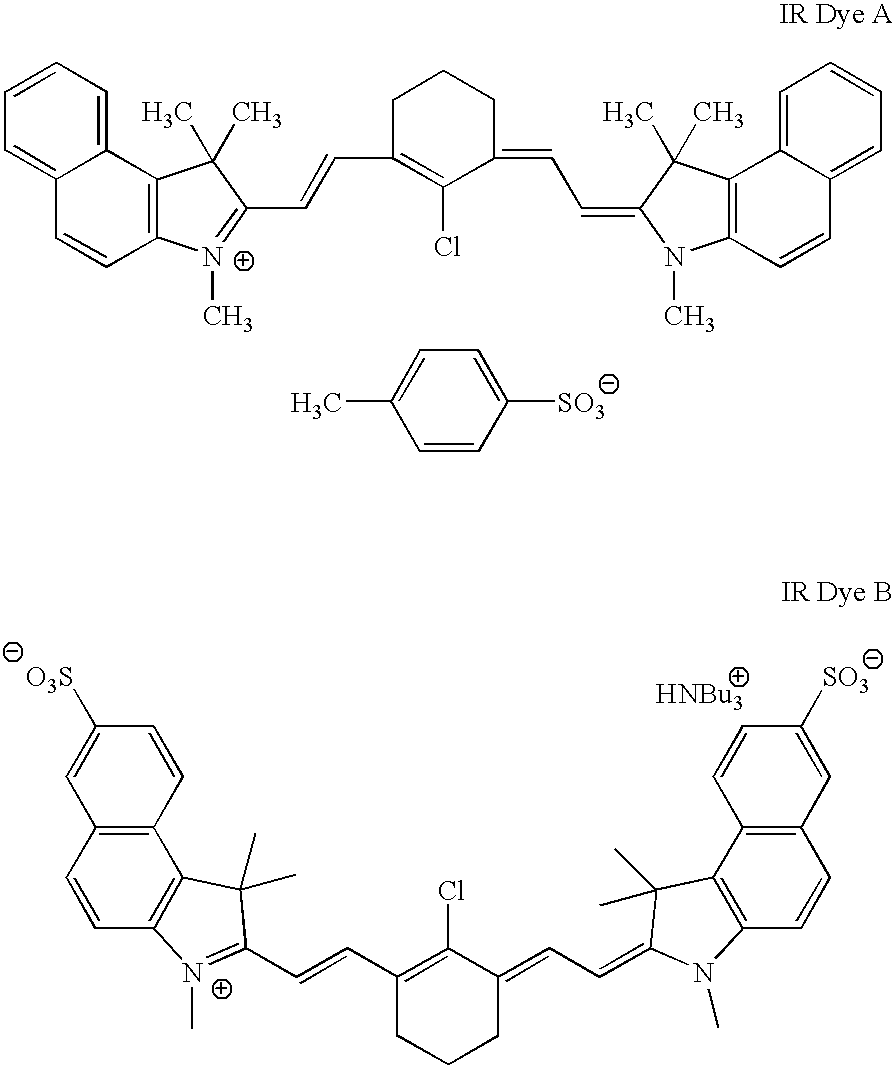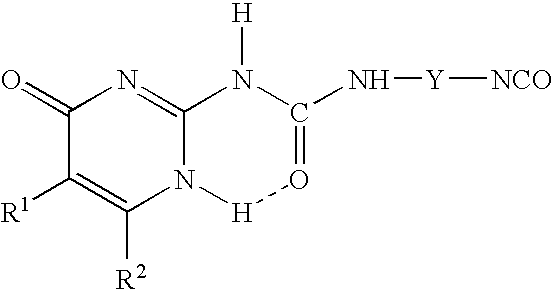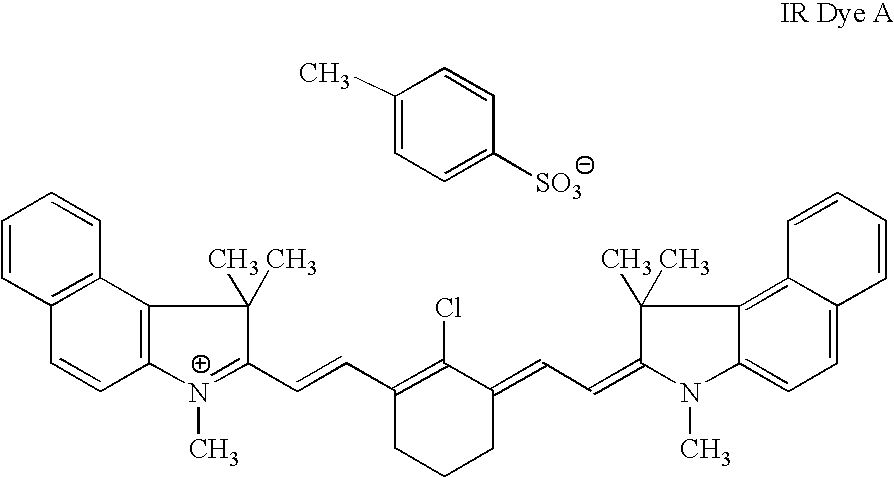Thermally sensitive, multilayer imageable element
a multi-layer, thermal imageable technology, applied in the field of lithographic printing, can solve the problems of thermal imageable elements sensitive to mechanical damage, top layer of multi-layer, easy scuffing or scratching,
- Summary
- Abstract
- Description
- Claims
- Application Information
AI Technical Summary
Benefits of technology
Problems solved by technology
Method used
Image
Examples
examples
In the Examples, “coating solution” refers to the mixture of solvent or solvents and additives coated, even though some of the additives may be in suspension rather than in solution, and “total solids” refers to the total amount of nonvolatile material in the coating solution even though some of the additives may be nonvolatile liquids at ambient temperature. Except where indicated, the indicated percentages are percentages by weight based on the total solids in the coating solution. “Molecular weight” refers to weight average molecular weight measured by size exclusion chromatography.
Glossary956 DeveloperSolvent-based (phenoxyethanol) alkaline developer(Kodak Polychrome Graphics, Norwalk, CT, USA)2531-35Novolac resin, 50% m-cresol / 50% p-cresol; MW 5,000(Borden Chemical, Louisville, KY, USA)2531-36Novolac resin, 50% m-cresol / 50% p-cresol; MW 9,900(Borden Chemical, Louisville, KY, USA)2539-22Novolac resin, 50% m-cresol / 50% p-cresol; MW 14,000(Borden Chemical, Louisville, KY, USA)2539...
examples 1-6
This example shows that novolac resins with increasing p-cresol content have improved developer resistance and, hence, increased ability to withstand scuffing over a m-cresol-only novolac resin.
Underlayer A coating solution containing 85 parts by weight of binder A and 15 parts by weight of IR Dye A in 15:20:5:60 (w:w) butyrolactone:methyl ethyl ketone:water:1-methoxypropan-2-ol were coated onto substrate A using a wire wound bar. The resulting element comprising the underlayer and the substrate was dried at 100° C. for 90 seconds. The coating weight of the resulting underlayer was of 2.0 g / m2.
Top Layer Coating solutions containing 96.3 parts by weight of the novolac resin, and 3.7 parts by weight of ethyl violet in diethyl ketone were coated onto the underlayer using a wire wound bar. The coating weight of the resulting top layer was of 0.7 g / m2. The resulting imageable elements were dried at 100° C. for 90 seconds. The novolac resins used are shown in Table 1.
Each of the imageable...
examples 7-9
These examples show that novolac resins with increasing molecular weight have improved developer resistance and, hence, increased ability to withstand scuffing.
The procedure of Examples 1-6 was repeated except that the novolac resins indicated in Table 2 were used. Each of the resulting imageable elements was evaluated by the drop test. The results are shown in Table 2.
TABLE 2ExampleResin% p-cresolMWDrop Testa7N130%13,000360 sec8SD 390A0%10,000120 sec9SD 126A0% 1,700 10 secaTime required for the developer to remove the layers.
PUM
 Login to View More
Login to View More Abstract
Description
Claims
Application Information
 Login to View More
Login to View More - R&D
- Intellectual Property
- Life Sciences
- Materials
- Tech Scout
- Unparalleled Data Quality
- Higher Quality Content
- 60% Fewer Hallucinations
Browse by: Latest US Patents, China's latest patents, Technical Efficacy Thesaurus, Application Domain, Technology Topic, Popular Technical Reports.
© 2025 PatSnap. All rights reserved.Legal|Privacy policy|Modern Slavery Act Transparency Statement|Sitemap|About US| Contact US: help@patsnap.com



